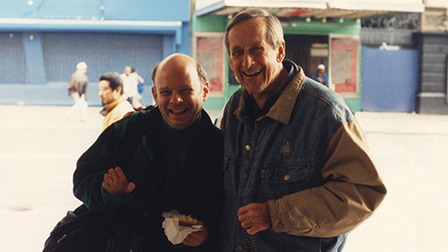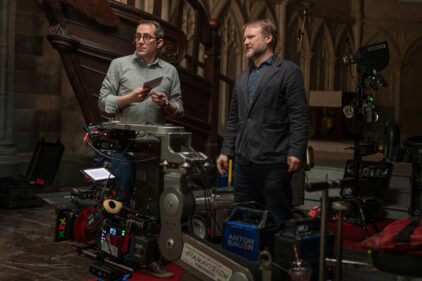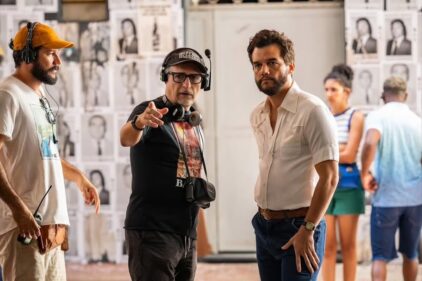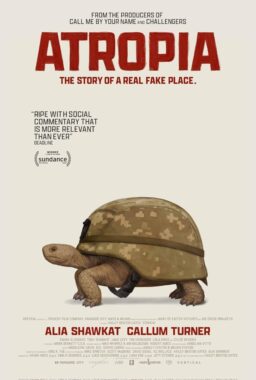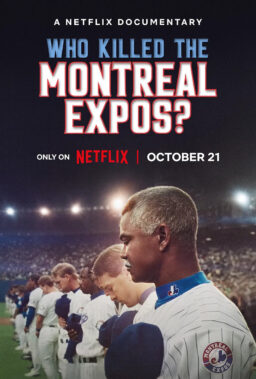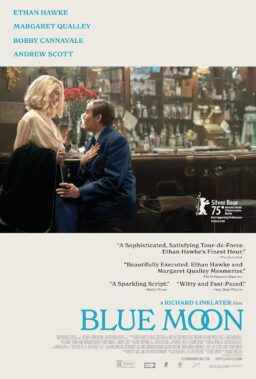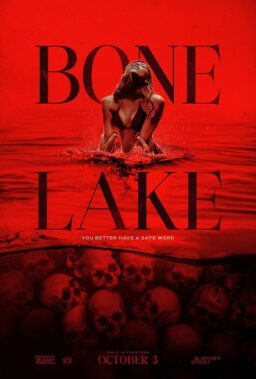If one
was to sit down and try to dream up an idea for the least commercially
promising film project imaginable, it seems impossible that anyone could dream up
a premise less likely to register with the moviegoing public than one involving
nothing more than the sight of two long-separated friends who reunite for a
long, leisurely dinner in which they discuss art, philosophy, the meaning of
life and other such weighty subjects. And yet, not only did real-life friends
and artistic collaborators Wallace Shawn and André Gregory team up to co-write
and co-star in just such a film under the direction of Louis Malle, the
resulting film, “My Dinner with André” (1981), went on to become a
sleeper hit with critics and audiences alike and went on to play in theaters
for months and months while entering the pop cultural firmament to such a
degree that even television shows like “The Simpsons” and
“Community” have included hilarious jokes that have paved homage to
its singular achievements.
The
success also allowed Shawn and Gregory to collaborate on two additional
projects that began as theater pieces and eventually morphed into feature films
as well: “Vanya on 42nd Street” (1994), an innovative take on their
long-standing rehearsal of Anton Chekov’s warhorse “Uncle Vanya” that
would prove to be Malle’s final film before his untimely death, and “A
Master Builder” (2014), a intriguing take on the Henrik Ibsen play,
directed by Jonathan Demme, about an egotistical architect (Shawn) who finds
himself confronting a lifetime of misdeeds in the form of a flighty young woman
(Lisa Joyce) from his past whose return is of the deeply unsettling variety.
These three films have now been brought together by The Criterion Collection
for the new Blu-Ray set “André Gregory & Wallace Shawn: 3 Films”
that, in addition to the Blu-Ray debuts of “My Dinner with André” and
“A Master Builder,” includes the usual array of bells and whistles
including interviews, documentaries, archival materials, detailed liner notes.
To promote the set, I was able to speak on the phone with both Shawn and
Gregory about the creation of the films and their enduring legacies and,
perhaps not surprisingly, they both had plenty to say.
Although
the scheduling meant that I had to speak to them separately, I have merged the
two conversations together into one and was amused to discover that their
answers somehow still managed to complement one another despite the separation.

One of the
interesting things about looking at the box set is the way that it sort of
mirrors the evolution of the independent film movement in America over the past
30-odd years. When “My Dinner with Andre” debuted in 1981, it was
part of the initial pre-Sundance wave that also included the likes of John
Sayles’ “Return of the Secaucus 7” and Errol Morris’ “Gates of
Heaven.” When “Vanya on 42nd Street” arrived in 1994, that was
at the time when the movement was at its peak of cultural influence. When
“A Master Builder” arrived last year, it came during a weird time in
its history where there are more films being made than every before but many
are struggling to survive in the dwindling number of theaters willing to play
offbeat fare.
ANDRE GREGORY: That is true. I think that “My Dinner with
André” and “sex, lies and videotape” pretty much launched the
independent film movement. I don’t think there really was such a thing before
those two. We began the movement and we are now watching it end and change
radically.
WALLACE SHAWN: With “A Master Builder,” everybody said to us
“If you think this is the same time that we were living in 20 years ago,
you don’t know what is going on” because it is practically impossible to
get anyone to see your film. With “My Dinner with André,” people also
said that it was impossible to get anyone to see it but they turned out to be
wrong. We have come back to everybody saying that it is impossible but this
time, I don’t know. There are a lot of people–my own personal acquaintances–who
are interested in Ibsen and the earlier things that Andre and I have done. I
see them in the street and they say “When is your Ibsen film going to come
out?” and I tell them that it did come out last summer and played for two
weeks. They never even heard about it.
As opposed to
the days of “My Dinner with André,” when theater owners were a little
more willing to give a film time to find an audience before yanking it.
Nowadays, even arthouses are not particularly willing to let something play
unless it is an immediate hit.
WS:
“My Dinner with André” was most definitely not an immediate hit. It
did very poorly at the Lincoln Plaza box office for six weeks and it was doing
worse every week. In fact, it was turned around by the man your website honors
and his partner. Siskel & Ebert gave us a great review after we had been
opened for about six weeks and saved us from being thrown out of the theater.
Our closing had actually been announced in the ads and if we had been thrown
out, our film would have been looked upon as a sad failure and people would
have been saying that it was a bad movie.
How did the
collaboration between you two begin?
AG:
Originally, I did an adult production of “Alice in Wonderland” that I
think played in New York for six years and toured the world. Wally, who did not
know me personally, came to see it many times. I didn’t even know that he was a
writer or a playwright–I assumed he was a poet. At one point, I needed a
writer who could do a modern “Peer Gynt” and I called Renata Adler,
who was a mutual friend, who told me about Wallace. I called him up and he was
in a hotel room in the middle of nowhere. He was very excited and sent me about
nine unproduced plays and I commissioned him to do a modern “Peer Gynt,”
which played at the Public Theater. That was how we started working together.
Was there one
specific idea that sparked what would become “My Dinner with Andre”?
AG:
I had told him many of the stories just in passing as a friend because I was
kind of going through hell at that time. One day, he called me and said
something like “You know, when I am your age, I don’t want to go through
what you are going through now. I thought maybe we could get together and talk
about it so that I wouldn’t have to go through that.” He thought that out
of those talks, maybe we could do a talking head TV show or movie. I thought
that was a great idea because I could picture how funny our voices could be
together. So we sat down for about a year, five days a week, with a tape machine
and we began every day with my telling him a story–not necessarily one of the
ones in the movie–and that would trigger a conversation. Out of that, we got a
2200-page manuscript which Wally edited down to maybe 500 pages with 34 major
themes and we chose our four favorite. Louis Malle came into the picture after
we had been rehearsing for nine months and helped whittle it down into a
two-hour movie.

The film, of
course, not only became a surprise hit at the box-office but also entered the
pop culture universe as well, even inspiring a hilarious gag on “The
Simpsons.” For you, was there one particular moment when you realized that
it had broken through into the mainstream to the degree that it did?
WS:
As the years passed, there was no one moment that I remember but I would meet
more and more people on the street who told me that they loved the movie but
hadn’t realized that it was based on real people at all. They had taken it
purely as a made-up fictional story with two completely made-up characters and
they still liked it. I began meeting people who had no interest in theater or
any of the writers that we mentioned in the film but still somehow responded to
it. That was kind of mind-boggling.
AG:
It played in New York for two years and in L.A. for three or four. When
something like 20 cities wanted a print of the film to show it, we knew we had
a runaway hit.
How long after
“My Dinner with André” before you began the project that would
eventually become “Vanya on 42nd Street”?
WS:
“My Dinner with André” was made in 1980 so I am guessing that it was
about nine years later that Andre said that he wanted to get a bunch of people
together to explore “Uncle Vanya” and to rehearse it for maybe eight
weeks over the summer. I was very reluctant because I was really trying to get
out of theater at that time–I had become fed up with theater–and I wasn’t
really in love with that part, the pitiful fellow who is scorned by the woman
he is in love with. Andre had to work pretty hard to convince me to join this group.
There was no plan to do anything with the play. We weren’t going to perform the
play–we were going to just work on it because there is an old tradition with
New York actors, such as the ones from the Actors Studio, of just working on
things that were never performed for the public–they worked on them just to
learn. That is what we did for that one summer.
At what point
did the decision come to bring in Louis Malle and transform what you all had
been doing into a film?
WS:
At the end of the eight weeks, we all had a good time and so André suggested
that we do it again sometime. We all figured out a time when we could meet
several months later and then we met again. Eventually, each of us would bring
in a person that we loved to watch the rehearsal and those visitors were very
enthusiastic. I like to perform and show off, so that was very encouraging for
me. Eventually, we began doing it for groups of people, maybe 10 to 20 people,
and at that time, we were rehearsing in the New Victory Theatre on 42nd Street,
which had been deserted. Eugene Lee did a very rudimentary set design–a few
tables and chairs–and people sat up on the stage with us and we spoke in our
natural voices. We did it differently every time and it was a rehearsal where
Andre gave notes afterwards. No money changed hands–we just invited people
that we knew.
Louis was one of those people and so as soon
as he came, the idea arose of maybe doing it as a film, though it was just a
vague idea. Then we stopped for a while and didn’t do it for maybe two years.
My memory of it is George Gaynes and Julianne didn’t really love doing it two
inches away from people–they found that creepy and didn’t want to get together
again and do it that way but if it was a film, that would be good. Somehow, we
were able to raise the money for the film–I had nothing to do with producing
it–and we basically followed the same rule that we didn’t decide how we were
going to do each scene. We sort of blindly leapt into the first take and stuck
with whatever we had done for the rest of the movie.

Can you talk a
little about the casting of the project? For example, Julianne Moore is quite
wonderful in it and she is now regarded as one of our best actresses. However,
at the time when you first began working on this, she was pretty much an
unknown quantity.
AG:
That was the film that launched her because Robert Altman was in the audience
for the theater production and loved her so much that he put her in his next
film, which was “Short Cuts.”
In a way, Louis
Malle was the perfect person to direct both “My Dinner with André”
and “Vanya on 42nd Street” because they are two projects that blend
together elements of documentary and traditional narrative elements and he was
a director who often went back and forth between narrative and documentary
filmmaking.
WS:
It was a lot of fun to work with him. He was very affectionate towards his
actors and severe towards the crew. He was very polite but he didn’t express
love for every member of the crew during every shot. He could be critical or
very detached about the making of the film but with the actors, he was
tremendously affectionate. We never talked about the play–André’s methods
didn’t involve sitting around and discussing people’s motivations or what was
happening in a scene–but Louis wanted to know those things. We spent maybe six
weeks rehearsing with him asking questions–some of them I didn’t think were
anybody’s business and I was shocked by his asking of certain questions. That
was what he felt he needed in order to make the film. With both films, he
practiced quite a bit with a video camera filming bits.
André, did you
ever have any desire, having directed the stage version, of directing the film
of “Vanya on 42nd Street” as well?
AG:
No. I have no interest. I think the difference between directing a play and
directing a film is the difference between painting and sculpture or painting
and composing. Film is a totally different medium and even though people have
told me “All you have to do is get a good cinematographer,” I am so
good as a theater director, if I may say so, that I know I am not equipped to
do a film.
How did “A
Master Builder” come to be the next project? It is such an odd play in the
way that it contains some elements of raw realism and other parts, such as the
character of Hilde, that are deliberately strange.
WS:
I have always been a big fan of Ibsen, since I was quite young, and the first
piece of theater that Andre and I worked on together, back in the early
Seventies, was “Peer Gynt”–he hired me as a writer to try to adapt
it for his company of actors. That project was never completed but I have
always loved Ibsen. I said to Andre that he should do an Ibsen play and he said
that it sounded like a great idea but that he wanted to select the play and he
picked “A Master Builder.” He was beginning to become a man of a
mature age and that play is partly about the subject of aging.
AG:
On and off over the years, I had read it in uniformly mediocre translations and
I would find that you would get a few pages that would be like the sun bursting
through the clouds and then the sun would disappear into murky and boring
obscurity. I had a hunch that this was a great theater project if it could be
properly translated. From the beginning of rehearsals for it as a play, I had
always intended for it to be a film, so I commissioned Wally to do the
translation.
WS:
I translated and adapted, which basically means I screwed around with it a
little bit. I blew up the Norwegian text to a very large size and a professor
named Sandra Sarhi, who teaches Scandinavian literature, wrote the synonyms in
a rather small handwriting in between the lines of the large, blown-up
Norwegian text. Then we talked through that and she would say “This word
means ‘house’ but it doesn’t mean ‘home.'” I know a little German and I
know English so once I knew the literal meaning of the text, I suppose I felt I
was collaborating with the original author because it would have been
impossible for me–not knowing Norwegian or Norwegian culture–to capture the
exact mood of each line of Ibsen. In a funny way, and I am neither apologizing
nor boasting, it was as if I was writing the play following each line as it was
being delivered by Ibsen. I had a certain sense or idea of what Mrs. Solness
and her problems were and each line of my translation literally followed the
content of the line but I suppose it had a certain atmosphere that was provided
by me. Not that I was conscious of doing this but the play does have some
flavor of me in it as it was translated.
One characteristic of the translation is that
I used more words than he did because he wrote in the simplest possible way and
if you translate it with the same number of words that he used, it could come
off sounding a little crude and there are many translations of Ibsen that are
quite crude and wooden. The characters seem like sluggish giants. Sometimes to
express the intelligence of the character, I had to use more words than he did.
My translation is very long and then I made a lot of cuts. The play is
obviously not a completely realistic play–Ibsen’s early plays were poetic
dramas written in verse that were totally fantastical before switching to
prose. “A Master Builder” is going back in the poetic direction
because it is not a realistic play–it has realistic parts but real architects
don’t talk about building castles standing in the sky. That is not a realistic
architectural conversation. It seemed best, and some people said that this was
idiotic on my part, if you interpreted Hilde as a dream that Solness has in
order to give himself the opportunity to die more peacefully and deal with the
conflicts in his life through the fantasy. I did a few twists to sort of
clarify that.

The span of time
for “A Master Builder” from the first theatrical rehearsals to the
release of the film was something like 14 years. In that time, did you find
your views on the play and the characters changing or evolving?
AG:
When I began, I felt that it was possibly a play about my having been a somewhat
mediocre father when I was young. I had given myself a C-. Over the last ten
years or so, I would give myself an A but then, I thought I was somewhat of an
absent father because I was so obsessed with my work. It seemed to be about me
but as time went on, I started to realize that it was more like “A
Christmas Carol” in that it was about how there is always time if you are
willing to change and it was also about aging and the fear of dying. At that
time, I was entering my mid-70’s. I think it is about many other things besides
that but that is what I identified with the most.
How did the
casting come about and evolve? For example, Lisa Joyce is amazing in the film
as Hilde but she is so young that she clearly could not have been playing the
part for the entire duration of the project.
AG:
She wasn’t. There was another actress who worked with us for quite a few years
but then left the production because she felt that she had become too old to do
the role, just as George Gaynes had been playing the role that I now play–by
the time we were ready for the public, he was 94 and could no longer come out
east and so I played the role. Lisa was a latecomer.
Like the late
Louis Malle, Jonathan Demme is another director who moves back and forth
between conventional narrative films and documentaries, How did the idea come
about to have him do the screen version of “A Master Builder”?
AG:
I had invited him to come and see it and he saw the last public run-through
that we did. He said to me “What are your plans for this now?” and I
told him that I had no plans. He said he thought we should make it into a movie
and that he should direct it. Like I said, I had always seen it as a movie
because I saw it, unlike “Vanya,” in close-up. I knew that he was this
mixture of a very commercial director and a downtown director–he had done
films about the Wooster Group and other theater artists. I didn’t know if he
would be interested in filming it but I thought that he would be an interesting
person to have see it, even though I had never met him before. The second he
said that he wanted to do it, I said “Lets go.”
WS:
He is also a wonderful storyteller, as Louis was, and he has a great sense of
humor, as Louis did, which is a good quality if you are directing Ibsen because
most people tend to see Ibsen as humorless, which is totally untrue. Like
Louis, he is out there with his camera every week of the year–he is not
someone who is waiting for that money to come through before he picks up a
camera. If he isn’t making a feature, he is making a documentary, which is the
way Louis was. They both have incredible flexibility and skills with film and
both are people who would recognize that it is usually a poor idea to film a
play. They are very hard to do and it is usually quite an unsuccessful
experiment, so they were both aware of the huge challenge that it represented.
Also, they happened to be capable of making a film in a short period of time
and on a small budget.
What are your
thoughts on the role of the critic in regards to film as opposed to theater?
After all, the films we have been talking about here are the kind that often
wind up living or dying largely on the strength of their reviews in order to
get the word out to potential viewers.
AG:
Of course, in the theater, a critic can make or break a play on opening night.
I don’t think they have that power anymore in film. They used to but part of
the reason they don’t have that power anymore is because of the changing nature
of film distribution and of the public no longer really going to the movies
very much. That is why I have great hopes for this DVD set, because people now
watch movies in their home. The reviews were almost universally bad for
“My Dinner with Andre” when it first opened and look at where it went.
The reviews for “Vanya” were so-so, I think. I am not sure that film,
unless it is a big production where it has to make a lot of money in the
opening weekend, it necessarily makes that much of a difference. In the case of
“A Master Builder,” we got great reviews but it still didn’t run very
long because movie attendance is changing so rapidly.
Over the years,
Wallace, you have managed to maintain this very odd sort of dual career. On the
one hand, you are known as this very formally radically playwright thanks to works
like “The Designated Mourner” and others. At the same time, you are
also a familiar face and voice, especially to younger audiences, as an actor
thanks to projects such as “The Princess Bride,”
“Clueless,” “Gossip Girl” and the “Toy Story”
films. For you, what is it like to navigate these two very different career
paths?
WS:
I suppose there is the potential danger of losing any grip your own identity in
a situation like that but it has never bothered me that much. I haven’t
collapsed mentally yet, though it can happen at any age, obviously. We all have
different sides. Theoretically, the naked man in his own bedroom is the same as
the guy in the suit sitting at a desk in an office. The guy brushing his teeth
is the same person as the one signing a treaty. Really, we go through an awful
lot of identities during a day, so are we always the same person? I have no
idea. I have never found it that bizarre to do the voice of an animal in a
cartoon one day and work on a political essay or play the next.
Andre, you also
did some screen acting on your own for a while, including “The Last
Temptation of Christ,” “The Bonfire of the Vanities” and
“Demolition Man,” but have not really done it for a while. Was this a
conscious decision on your part to step away from screen acting?
AG:
No. Actually, I prefer film acting to theater acting–I think it is easier. One
director said that character actors like me would have kept working until they
dropped dead back in the Thirties. Now, there isn’t the same need or desire for
unusual or eccentric people in movies. Even the Marx Brothers movies and Fred
Astaire movies had these wonderful subsidiary characters and they lasted
forever. I started finding that this was no longer true and once the economy
went sour, the few roles that were like that went to much better known actors.

